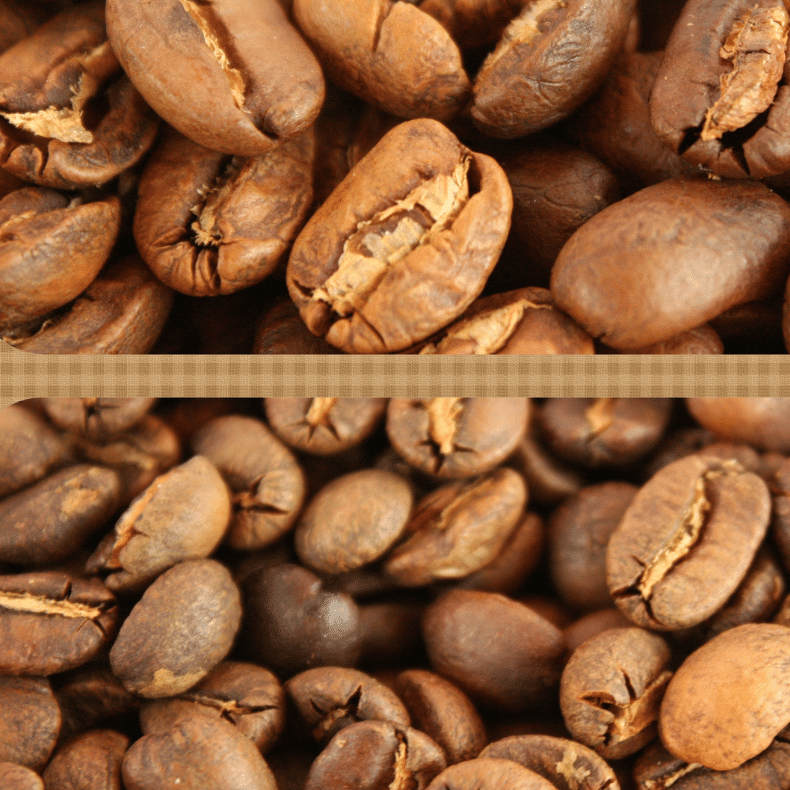Coffee beans are the start of your coffee adventure. There are two broad categories of coffee beans on the market—Arabica and Robusta. They have distinct differences that impact flavor profiles, caffeination and grade. In this post, we’ll provide an easy, accessible explanation of coffee beans.
The Coffee Bean: Structure and Shape
The coffee plant flowers red berries called drupes. They look somewhat like cherries. They have four layers: exocarp (the skin), mesocarp (pulp), parchment (first layer of the bean) and silver skin (second layer of the bean). The drupes of Arabica and Robusta look different, with the former longer and more oval and the latter round.
How Do You Get to the Coffee Bean?
First is the harvesting of the ripe berries. After harvest, growers immerse the berries in water to separate the pulp, revealing the green coffee beans. Roasting will plump them up and brown them.
Arabica Beans vs. Robusta Beans

Both beans come from the same plant family. Their differences come from the aroma and characteristics of the actual bean. Keep in mind that even beans in the same category can vary in quality and flavor profile. That’s because where and how they grow give every bean a unique quality.
All About Arabica
Coffee drinkers love and prefer Arabica beans. These beans have less caffeine than Robusta, but Arabica has a better taste. It’s smoother and sweeter with notes of chocolate and sugar. There may also be a hint of fruit or berry. For these reasons, the majority of coffee comes from the Arabica beans; it’s also the bean used in specialty grade coffee.
It grows best in higher elevations, mostly in Colombia and Ethiopia. Its flowers don’t appear for a few years after planting. It produces ellipsoidal fruits. Open them up to find two flat seeds—the coffee beans. Because the plant can self-pollinate, it’s more stable, with cross-pollination less probable.
Arabica Varieties
Arabica has two main varieties: Typica and Bourbon. The first variety discovered was the Typica. It’s known as the “original coffee of the New World.” It has low yields and excellent cup quality.
Bourbon varieties are more complex on the palate. They have balanced aromas with many mutations and subtypes. Some examples include Blue Mountain, Mundo Nava and Yellow Bourbon.
Regarding Robusta
Robusta may be less flavorful, but it’s a favorite for espresso because it produces a better crema (the creamy layer on top of the espresso). It’s a more robust bean in that it’s hardier, more resistant to disease and can grow at lower altitudes. Its plants have higher yields and more caffeine. Robusta can thrive in areas where Arabica would not. Its largest producer is India.
Experts believe its higher caffeine content may be due to a self-protection mechanism to thwart pests and disease. It cannot self-pollinate, so it depends on the wind, bees and other insects to reproduce.
Peaberry Coffee Beans
In rare cases for either Arabica or Robusta, a mutation occurs where the fruit has only one seed. The single seed is not flat since it’s solitary but pea-shaped, referred to as peaberry seed. Less than 10% of coffee plants produce the peaberry coffee bean.
Some coffee aficionados consider it to be superior, but most agree the nuances are small. Just as with regular split beans, some taste amazing, while others are just average.
Coffee Beans: Where Goodness Starts
It’s interesting to think about the journey of the coffee bean from drupe to cup. While you don’t have to be a coffee pro to enjoy, understanding different bean types helps you understand how varied flavors can be.
Ready to try some micro-roasted coffee beans? Check out our shop!

